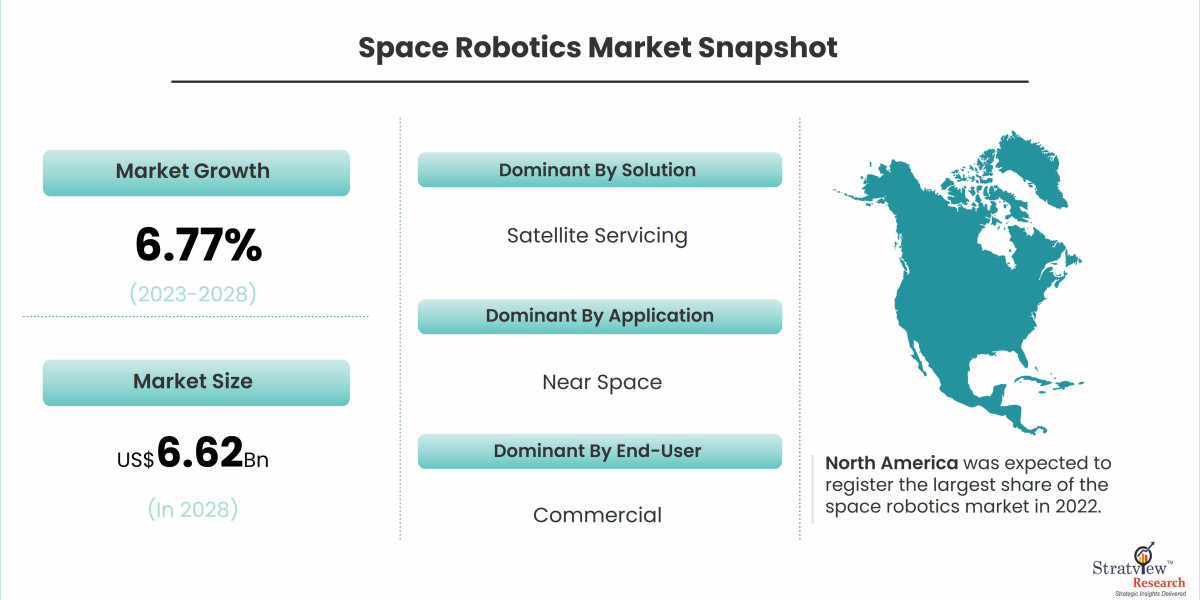Space robotics has revolutionized satellite maintenance, offering innovative solutions to extend the lifespan and enhance the efficiency of satellites orbiting Earth. As technological advancements continue to evolve, robotic systems are increasingly playing a crucial role in ensuring the reliability and sustainability of satellite operations.
According to Stratview Research, the space robotics market was estimated at USD 4.43 billion in 2022 and is likely to grow at a CAGR of 6.77% during 2023-2028 to reach USD 6.62 billion in 2028.
Enhanced Inspection and Monitoring Capabilities
One of the primary contributions of space robotics to satellite maintenance is its capability to conduct precise inspections and continuous monitoring. Robots equipped with advanced sensors and cameras can perform thorough visual inspections of satellite exteriors, detecting any signs of wear, damage, or malfunctions. This proactive approach allows operators to identify potential issues early, preventing catastrophic failures and ensuring optimal performance over extended periods.
Autonomous Repair and Maintenance
Robotic systems are equipped to autonomously perform routine maintenance tasks and minor repairs on satellites. This capability reduces the dependency on manned missions and the associated risks and costs. For instance, robotic arms can be deployed to replace faulty components, tighten loose bolts, or clean solar panels to maximize energy efficiency. These autonomous operations enhance the resilience of satellites and minimize downtime, crucial for maintaining uninterrupted communication, navigation, and scientific missions.
On-Orbit Servicing and Refueling
On-orbit servicing is another transformative capability offered by space robotics. Robots can rendezvous with satellites to perform complex servicing tasks, such as refueling propellant tanks or adjusting satellite orbits. This capability extends the operational lifespan of satellites that would otherwise be decommissioned due to fuel depletion, reducing space debris and optimizing resource utilization in Earth's orbit.
Adaptability and Versatility
Robotic systems designed for satellite maintenance are highly adaptable and versatile, capable of handling diverse types of satellites and operational scenarios. Modular robotic platforms can be customized with different tools and payloads to address specific maintenance needs, from communication satellites in geostationary orbit to scientific satellites in low Earth orbit. This flexibility ensures that robotic solutions can meet evolving industry requirements and technological advancements.
Future Prospects and Innovations
Looking ahead, the field of space robotics is poised for further innovation and integration into satellite maintenance operations. Advancements in artificial intelligence and machine learning will enable robots to perform increasingly complex tasks autonomously, responding in real-time to dynamic space environments and mission requirements. Additionally, ongoing research and development in robotics will continue to improve reliability, efficiency, and cost-effectiveness, making space missions more sustainable and reliable.
Conclusion
Space robotics represents a transformative paradigm in satellite maintenance, offering unparalleled capabilities in inspection, repair, and on-orbit servicing. By leveraging these advanced technologies, satellite operators can enhance mission reliability, extend satellite lifespans, and maximize operational efficiency. As the demand for satellite services grows, space robotics will play an increasingly pivotal role in ensuring the continuous functionality and sustainability of satellite systems in Earth's orbit and beyond.



